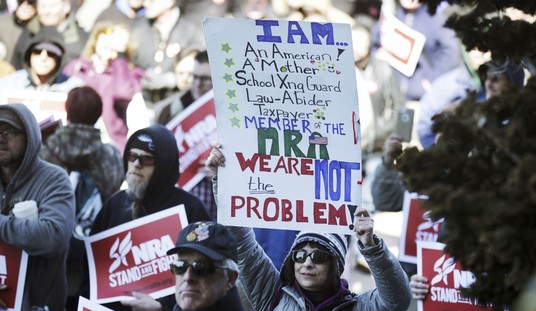Many gun advertisements and articles that I read give me the idea that people of modest means need not apply. You could conclude that unless you invest in a pistol that costs one thousand dollars or [much] more, you could not be seriously armed. Don’t forget your folding knife. You might be convinced that you need a hand forged, CPM S30V, 60 Rockwell, titanium lined, micarta handled, tactical folder used by Special Forces, with a price tag of at least three hundred dollars. (Anything else will either not cut, or its blade will snap off the moment it is deployed.) In all fairness, these ads and articles are intended to be for profit ventures, they are valuable in a free market and many of their products are excellent. Is there hope for the frugal citizen to arm themselves? Fellow Bob Cratchit’s (employed by Ebenezer Scrooges) take heart. The Poor Man’s Guide to Handguns and Stuff is here.
The first quest of this guide is to find a handgun. Chances are that the penny-wise among us won’t own more than a few handguns. This makes the choice extremely important. Even though the point of this article is how to be cheap, we do not want to buy a gun that we cannot depend on. The reliability of a firearm could mean the difference between life and death. This does not preclude being thrifty. There are very expensive firearms in the marketplace that have miserable reputations for reliability. I have personally seen two hundred dollar guns outperform thousand dollar guns many times. I once owned a Makarov .380 pistol that would not fail. I paid $129 new for that pistol. It was an amazingly accurate and durable gun. The old adage says, "You get what you pay for." This is a general truth, but there are far too many exceptions to make it a rule. The Eastern European Makarovs are examples of such exceptions. Function and reliability should be the paramount concerns for the thrifty would-be gun owner. Beauty and esthetics are non-essential price increasers.
Statistical probability would say that the fewer the moving parts, the lower the chances of failure. Therefore, a gross blanket statement would be that a revolver should be the poor man’s first choice. Revolvers can be considerably cheaper than auto-loaders, but you should bear in mind that revolver ammunition can be expensive, depending on the caliber. What you save on the gun may be easily made up for in the cost of cartridges. Of course, you must consider the power of the gun to stop attacks, especially if you plan to only own one gun. .22LR ammunition is very cheap, but it is very poor at stopping attacks. .38 special is an acceptable round, but I think that a small .357 magnum would be a better choice. A .357 magnum revolver will also shoot less expensive .38 special cartridges.
If an auto-loader is your cup of tea, consider a 9mm. Personally, I prefer a .45 ACP, but a 9mm is an excellent choice for performance and cost. 9mm is very affordable ammunition and an acceptable attack-stopper, but you would need to buy a quality auto-loader for it to perform well, unless you buy a 9mm revolver. Taurus happens to make a decent one that is relatively inexpensive. Ruger makes some excellent auto-loaders that have surprisingly low prices. I personally do not own a Ruger, but I have fired several models and have talked at length with many people who are pleased with their Ruger auto-loaders. Ruger also makes some very good revolvers. Kel-Tec makes an excellent 9mm auto-loader that is quite small and concealable. I recommend Kel-Tec and love their products, but I do not recommend a Kel-Tec to a first time gun buyer. Kel-Tecs are extremely lightweight. For people without proper training, this makes them prone to "limp-wristing," and thus failing to feed or eject. They are also sometimes "diamonds in the rough," needing a little internal polishing, but Kel-Tec’s world-class customer service will take care of all manufacturer imperfections. A few complications could discourage a beginner. It should be noted though that there are many Kel-Tec owners that get a gem right out of the box. For the experienced shooter, the Kel-Tec is a great bargain. Of course, there are 9mm Glocks. If you are only going to own one gun, I would recommend a Glock. They are known for dependability and durability. They won’t be a $129 wonder gun, but they are a very good choice and well worth the money
Another way of saving money is to buy a used gun. Many people trade in their guns when they see the next big fad. Often, these guns have seen very little use and are priced to sell. Keep an eye on the used gun display at your local gun shop. If you know what you are looking for and are confident that you will not overlook some hidden problem, there are some very good deals to be had. Find a good gunsmith to inspect any used guns before you purchase them if you can.
Ammunition is actually the biggest cost in handgun ownership. In order to shoot enough to be somewhat proficient, you are going to spend some money on ammunition. There are some great deals on the internet that are too numerous to mention here. The best deals that I have found are for 9mm ammunition. This should be a consideration when purchasing a handgun. Like a color printer and the price of ink cartridges, you must consider the cost of ownership. If you get a great deal on a 10mm pistol, but have not considered the impressive price tag on 10mm ammunition, you could be very disappointed. A gun that is too expensive to shoot is not a good deal.
To offset the cost of ammunition, you may want to consider reloading. When I first looked into reloading, I thought that it was going to be far too expensive for me to consider. My neighbor shoots in competitions and is far more affluent than I am. His reloading bench is more like a reloading laboratory. He has turrets, digital thingies, air powered whatchamacallits, etc. I was discouraged. I only saw price tags. My budget would not allow me to buy a setup like that. I did some more research and found that I could actually reload at a very low cost.
I obtained a Lee Loader Anniversary Kit for under one hundred dollars. Of course, I had to get dies, powder, primers, scales, calipers, etc., but these are not very expensive and many can be found on EBay (not powder or primers). I bolted a board to a little aluminum cart that I found in a scrap metal dumpster, clamped the press to the board and voila! I began to reload. My set-up requires the user to sit on the floor, but I have produced some consistent and accurate ammunition for myself. I do caution you to do some studying before embarking on reloading. It can be dangerous if you don’t know what you are doing. If money is an issue, reloading can be the difference between practicing and not practicing shooting your handgun. Although I am fortunate enough to be able to purchase my target ammo, possessing a reloading press is potentially priceless. In the event that some economic or political situation should prevent easy access to commercial ammo, I have a way to make my own.
I think that holsters are like the underwear of handguns. As long as it does the job and is comfortable, the rest is lingerie. Beautiful holsters for concealment may seem like an oxymoron. There are fantastically designed concealment holsters that have fantastic prices. Kydex or plastic composite holsters can be had at very reasonable prices and they often function on par with their handmade counterparts. Even though a quality holster can be had for a reasonable price, do not underestimate the importance of your holster. It is a critical component of your weapon system. For pocket holsters, you only need a fitted sleeve. Nylon pocket holsters are quite inexpensive.
Last, but not least, is the topic of knives. You want a tactical folder! A knife is an essential tool. It can go places that your gun cannot and it can help you retain your gun if it gets grabbed. Some would have you believe that you must spend a fortune on a knife. This is ridiculous. I recently read an article by a distinguished knife instructor and martial artist who carries a sixty-five dollar knife. I also read that in South Africa, more people have been killed with three dollar knives than with any other weapon. Knives for self-defense have only a few requirements. They need to be strong, not fold up on your fingers, be easily deployed and be sharp. There are many reasonably priced knives that will function quite well. The cheap knife shopper will have to be more cautious than the gentry because among the bargains there is a lot of junk. Ten dollar knives found at the gas station are probably not going to be dependable. Boker, Spyderco, SOG, Emerson, CRKT, Kershaw, and Benchmade have "entry level" knives that are dependable and strong, and will last for years. I have seen some Pakistani made knives that were serviceable. I have also seen some that should be used as fishing sinkers. The main things to look for in a tactical folder are the hinge and the locking mechanism. If the steel is sub-par, it could break off at a critical time. Many cheaper knives make up for cheap steel by adding thickness, which also adds weight.
If your budget is extremely tight, you may want to consider a fixed blade knife. A short, fixed blade does not have the complication of having a hinged locking device and it is less prone to breakage. People have defended themselves with steak knives and screwdrivers. Therefore, an expensive knife may not necessarily defend you any better than a cheap one. Inexpensive, full tang knives can last for years. Avoid sideshow junk: knives that have skulls or kung fu symbols on them, fantasy shaped blades, etc. Your cheap knife will probably not keep a very good edge. If you carry it for self-defense, try not to use it for utility purposes, so it will be sharp when you need it.
Ultimately, purchasing inexpensive self-defense items has more risk than buying "the best," but if you are cautious and patient, you can find some excellent items that function very well. If your budget is extremely tight, looking for bargains or making your own accessories may be the difference between having them or not, and it may also enable you to afford the cost of practice, which is a most critical element in self-defense. Always use good judgment when purchasing inexpensive items. Read as much as you can on the subjects in order to understand what you are looking for. With a little work, patience and study, frugal people like me can obtain effective self-defense tools.
Thanks to our friends at the United States Concealed Carry Association for this article. To get their free Armed American Newsletter, click here.








Join the conversation as a VIP Member